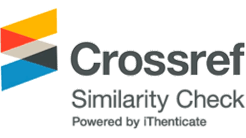Original Article
Abstract
References
Information
Bae, M., Kim, H.C., Kim, B.-U., and Kim, S. 2017. Development and application of the backward-tracking model analyzer to track physical and chemical processes of air parcels during the transport. J. of Korean Society for Atmospheric Environment 33(3): 217-232. (in Korean)
10.5572/KOSAE.2017.33.3.217
Park, H.Y., Park, H.S., Lee, B.R., Choi, H.J., Kim, H.R., Lim, H.J., Park, C.O, Kim, I.S., Park, G.H., Jeon, D.Y., and Bae, M.S. 2022. Source assessment of PM-2.5 in the residential areas of Gwangyang Bay using source apportionment model(II). J. of Environmental Analysis, Health and Toxicology 25(1): 18-32. (in Korean)
10.36278/jeaht.25.1.18
- Publisher :Korean Society of Ecology and Infrastructure Engineering
- Publisher(Ko) :응용생태공학회
- Journal Title :Ecology and Resilient Infrastructure
- Journal Title(Ko) :응용생태공학회 논문집
- Volume : 10
- No :4
- Pages :125-134
- Received Date : 2023-11-20
- Revised Date : 2023-11-29
- Accepted Date : 2023-11-29
- DOI :https://doi.org/10.17820/eri.2023.10.4.125



 Ecology and Resilient Infrastructure
Ecology and Resilient Infrastructure






